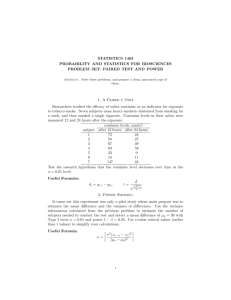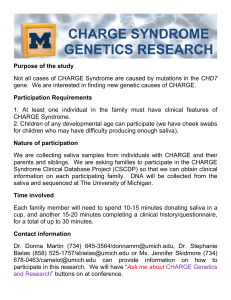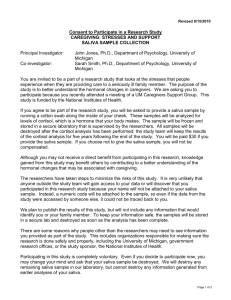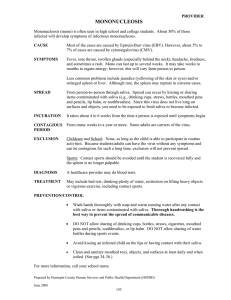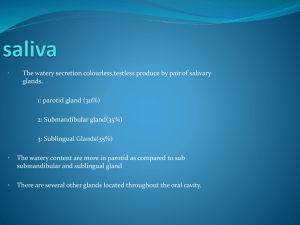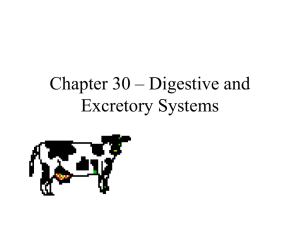Document 13309971
advertisement
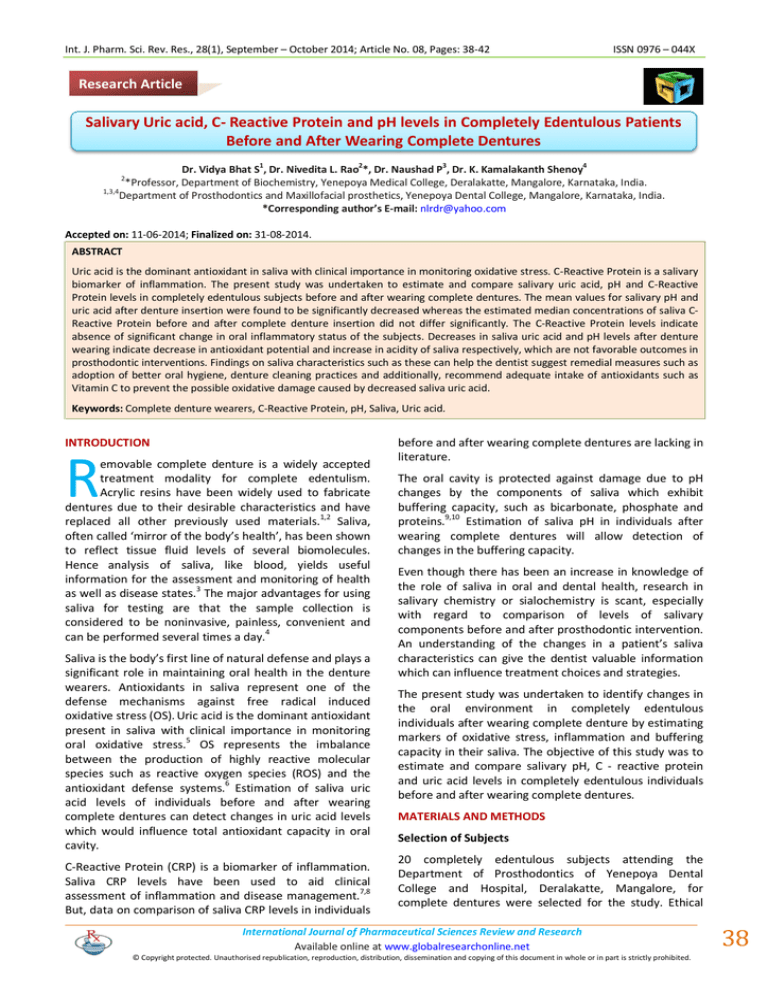
Int. J. Pharm. Sci. Rev. Res., 28(1), September – October 2014; Article No. 08, Pages: 38-42 ISSN 0976 – 044X Research Article Salivary Uric acid, C- Reactive Protein and pH levels in Completely Edentulous Patients Before and After Wearing Complete Dentures 1 2 3 4 Dr. Vidya Bhat S , Dr. Nivedita L. Rao *, Dr. Naushad P , Dr. K. Kamalakanth Shenoy *Professor, Department of Biochemistry, Yenepoya Medical College, Deralakatte, Mangalore, Karnataka, India. 1,3,4 Department of Prosthodontics and Maxillofacial prosthetics, Yenepoya Dental College, Mangalore, Karnataka, India. *Corresponding author’s E-mail: nlrdr@yahoo.com 2 Accepted on: 11-06-2014; Finalized on: 31-08-2014. ABSTRACT Uric acid is the dominant antioxidant in saliva with clinical importance in monitoring oxidative stress. C-Reactive Protein is a salivary biomarker of inflammation. The present study was undertaken to estimate and compare salivary uric acid, pH and C-Reactive Protein levels in completely edentulous subjects before and after wearing complete dentures. The mean values for salivary pH and uric acid after denture insertion were found to be significantly decreased whereas the estimated median concentrations of saliva CReactive Protein before and after complete denture insertion did not differ significantly. The C-Reactive Protein levels indicate absence of significant change in oral inflammatory status of the subjects. Decreases in saliva uric acid and pH levels after denture wearing indicate decrease in antioxidant potential and increase in acidity of saliva respectively, which are not favorable outcomes in prosthodontic interventions. Findings on saliva characteristics such as these can help the dentist suggest remedial measures such as adoption of better oral hygiene, denture cleaning practices and additionally, recommend adequate intake of antioxidants such as Vitamin C to prevent the possible oxidative damage caused by decreased saliva uric acid. Keywords: Complete denture wearers, C-Reactive Protein, pH, Saliva, Uric acid. INTRODUCTION R emovable complete denture is a widely accepted treatment modality for complete edentulism. Acrylic resins have been widely used to fabricate dentures due to their desirable characteristics and have replaced all other previously used materials.1,2 Saliva, often called ‘mirror of the body’s health’, has been shown to reflect tissue fluid levels of several biomolecules. Hence analysis of saliva, like blood, yields useful information for the assessment and monitoring of health as well as disease states.3 The major advantages for using saliva for testing are that the sample collection is considered to be noninvasive, painless, convenient and can be performed several times a day.4 Saliva is the body’s first line of natural defense and plays a significant role in maintaining oral health in the denture wearers. Antioxidants in saliva represent one of the defense mechanisms against free radical induced oxidative stress (OS). Uric acid is the dominant antioxidant present in saliva with clinical importance in monitoring oral oxidative stress.5 OS represents the imbalance between the production of highly reactive molecular species such as reactive oxygen species (ROS) and the 6 antioxidant defense systems. Estimation of saliva uric acid levels of individuals before and after wearing complete dentures can detect changes in uric acid levels which would influence total antioxidant capacity in oral cavity. C-Reactive Protein (CRP) is a biomarker of inflammation. Saliva CRP levels have been used to aid clinical assessment of inflammation and disease management.7,8 But, data on comparison of saliva CRP levels in individuals before and after wearing complete dentures are lacking in literature. The oral cavity is protected against damage due to pH changes by the components of saliva which exhibit buffering capacity, such as bicarbonate, phosphate and proteins.9,10 Estimation of saliva pH in individuals after wearing complete dentures will allow detection of changes in the buffering capacity. Even though there has been an increase in knowledge of the role of saliva in oral and dental health, research in salivary chemistry or sialochemistry is scant, especially with regard to comparison of levels of salivary components before and after prosthodontic intervention. An understanding of the changes in a patient’s saliva characteristics can give the dentist valuable information which can influence treatment choices and strategies. The present study was undertaken to identify changes in the oral environment in completely edentulous individuals after wearing complete denture by estimating markers of oxidative stress, inflammation and buffering capacity in their saliva. The objective of this study was to estimate and compare salivary pH, C - reactive protein and uric acid levels in completely edentulous individuals before and after wearing complete dentures. MATERIALS AND METHODS Selection of Subjects 20 completely edentulous subjects attending the Department of Prosthodontics of Yenepoya Dental College and Hospital, Deralakatte, Mangalore, for complete dentures were selected for the study. Ethical International Journal of Pharmaceutical Sciences Review and Research Available online at www.globalresearchonline.net © Copyright protected. Unauthorised republication, reproduction, distribution, dissemination and copying of this document in whole or in part is strictly prohibited. 38 © Copyright pro Int. J. Pharm. Sci. Rev. Res., 28(1), September – October 2014; Article No. 08, Pages: 38-42 clearance for conducting the study was obtained from the Institutional Ethics committee. Informed consent was obtained from all the subjects. Following a complete medical history, all subjects were examined for oral lesions. Patients with systemic diseases, oral lesions, smoking habits, recent history of infections, inflammatory conditions, surgical procedures and trauma were excluded from the study. Collection of saliva samples Saliva samples were collected from subjects immediately before the insertion of dentures. Subjects were recalled one month after the denture insertion for collecting their second set of saliva samples. Unstimulated whole saliva was collected by passive drooling at least 2 hours after any food intake. Samples visibly contaminated with blood were discarded. After rinsing mouth 3-4 times with water, saliva was allowed to accumulate in the floor of the mouth for approximately 2 minutes and repeatedly expectorated into ice-chilled polypropylene vials to collect about 2 mL each. The time and date of specimen collection were recorded. The samples were stored at −20°C to avoid bacterial growth until their analyses. Estimation of saliva pH ISSN 0976 – 044X Table 1: Characteristics of the study group Minimum Age (yrs) 35 Gender Maximum 73 Std. Deviation Mean 52.55 9.865 Distribution (Number) 35 – 45 (5) 46 – 60 (12) Above 60 (3) Female 8 / Male 12 Table 2: Saliva pH values in edentulous individuals before and after wearing complete dentures Edentulous Pre-denture insertion Post-denture insertion Number of subjects 20 20 Minimum 6.40 6.20 Maximum 7.50 6.80 Mean 6.70 6.43 Std. Deviation .25 .19 p .000 Highly significant The salivary pH was found to be significantly decreased with mean pH 6.43 in edentulous subjects one month after insertion of complete denture compared to their mean pH value of 6.70 before denture insertion (Table 2, Figure 1). The salivary pH was recorded qualitatively by dipping pH strips (Bright B. Rose, Chemocraft) in the whole saliva aliquots and the colors obtained were matched on the color scale. Estimation of saliva uric acid Collected saliva samples were placed on ice immediately then, centrifuged at 3000 rpm for 15 min. and the supernatants were used for analyses of uric acid. Analyses were performed using VITROS Uric slides and VITROS Chemistry Products Calibrator Kit on VITROS Chemistry Systems Automated analyzer. Estimation of saliva C- Reactive Protein (CRP) Saliva samples were thawed, vortexed and centrifuged for 15 minutes at 3000 rpm, to pellet the mucins. Saliva supernatants were used for the CRP estimations. CRP concentrations were determined by Enzyme Linked Immunosorbent Assay (ELISA) method using salivary CRP ELISA kit (Salimetrics, USA) which had very high sensitivity and lower detection limit of 10 pg/mL. Data Analysis Data were statistically analyzed by Wilcoxon signed-rank test using SPSS 13.0 statistical software. p value < 0.05 was considered to be statistically significant RESULTS AND DISCUSSION The study included 20 completely edentulous subjects whose characteristics are shown in Table 1. Figure 1: Graph depicting the difference in saliva pH values in edentulous individuals before and after wearing complete dentures Saliva buffers are responsible for maintaining the salivary pH within the normal range of 5.6 to 7.0 with an average value of 6.7. The bicarbonate buffer system is the most important buffer in stimulated saliva, while in unstimulated saliva used in the present study, it is reported that phosphate buffer system is most important.10-12 Saliva buffer systems offer protection in the mouth by preventing colonization of potentially pathogenic microorganisms by denying them optimization of environmental conditions. In addition, saliva buffers neutralize the acids produced by acidogenic microorganisms and prevent enamel demineralization.10 Provision of acrylic resin dentures is believed to alter the makeup of oral microflora by encouraging the growth of certain microorganisms. This change is believed to occur International Journal of Pharmaceutical Sciences Review and Research Available online at www.globalresearchonline.net © Copyright protected. Unauthorised republication, reproduction, distribution, dissemination and copying of this document in whole or in part is strictly prohibited. 39 © Copyright pro Int. J. Pharm. Sci. Rev. Res., 28(1), September – October 2014; Article No. 08, Pages: 38-42 as a result of the roughness of this material, even if highly polished and finished, and the ability of various microorganisms to adhere and colonize various surfaces 13 of this material. It has been reported that salivary pH is associated with bacterial number and increase in salivary bacteria may reduce pH of saliva in complete denture wearers.14 A study on the influence of salivary acidity on leachability of denture base acrylic resin revealed that lower pH increased leachability of methyl methacrylate in artificial saliva and suggested that chemotoxic actions of autopolymerized resins are potentially ascribable to 15 methylmethacrylate. In another study it has been reported that wearing of complete dentures for one month altered the microbial flora of the oral cavity, significant increase in the total colony forming units and appearance of Streptococcus mutans (S. mutans).16 These results coincide with studies which found that samples of saliva from edentulous patients before wearing dentures contained no S. mutans, however, these started to appear after denture wearing.13 Also, it has been shown that streptococci contribute to a wide range of cultivable micro-flora of plaque on removable dentures in patients with healthy oral mucosa.17 Alteration of microbial flora and appearance of S. mutans after denture wearing has been attributed to the presence of micro-porosities in the acrylic resin surface to which salivary pellicle is attached, colonization of the pellicle with microorganisms and denture plaque formation.18,19 The decrease in salivary pH observed in the present study could have been caused by increase in oral bacteria. Decrease in pH in turn favors microbial growth, alters leachability of denture resins which, can further disturb the oral environment. This emphasizes the need for adoption of better oral hygiene and denture cleaning practices to prevent the decrease in salivary pH observed in complete denture wearers of this study. Very few clinical studies have evaluated the salivary pH changes after the insertion of complete dentures. It is noteworthy that the finding of significant decrease in saliva pH obtained in the present study differs from that obtained in a previous study which reported that saliva pH increased significantly in complete denture wearers 15 days after denture insertion.20 However in that study, electro pH-meter had been employed for pH measurement whereas in this study, pH indicator strips had been used. The differences in duration of denture wearing that is 15 days versus 1 month in the present study, could also have contributed to the difference in findings. In the present study it was found that salivary uric acid was significantly decreased with mean value 2.26 mg/dL in edentulous subjects one month after insertion of complete denture compared to the mean value 2.79 mg/dL before denture insertion (Table 3, Figure 2).The decrease of salivary uric acid levels in edentulous subjects ISSN 0976 – 044X after complete denture insertion illustrates the presence of oral oxidative stress. Table 3: Saliva uric acid levels in completely edentulous individuals before and after wearing complete dentures Edentulous Pre-denture insertion Post-denture insertion Number of subjects 20 20 Minimum .5 .6 Maximum 6.30 4.60 Mean (mg/dL) 2.79 2.26 Std. Deviation (mg/dL) 1.43 1.17 p .005 Highly significant Figure 2: Graph depicting the difference in saliva uric acid levels in edentulous individuals before and after wearing complete dentures Saliva may contribute a first line of defense against oxidative stress caused by imbalance between production of highly reactive free radicals and antioxidant defense systems.6 Uric acid is the major antioxidant in saliva accounting for more than 85% of total antioxidant capacity of both unstimulated and stimulated saliva, with 5,21 clinical importance in monitoring oxidative stress (OS). According to the knowledge of the authors, there are no other reports on saliva uric acid levels or total antioxidant capacity in edentulous subjects or in denture wearers. The findings of this study may therefore be the first report in these subjects. It is important to note that OS has been implicated in the pathology of several oral diseases such as oral lichen planus and oral cancer.22 Decrease in the levels of important salivary antioxidants such as uric acid may be considered an important mechanism by which toxic effects of free radicals can initiate precancerous transformations, oral diseases and destroy the oral cavity homeostasis.23 Antioxidant therapeutic approaches have been proposed as preventive measures against 22,24,25 development of oral diseases. The antioxidant Vitamin C has been reported to restore or increase 26 salivary uric acid level. Therefore adequate intake of Vitamin C may be recommended to these denture International Journal of Pharmaceutical Sciences Review and Research Available online at www.globalresearchonline.net © Copyright protected. Unauthorised republication, reproduction, distribution, dissemination and copying of this document in whole or in part is strictly prohibited. 40 © Copyright pro Int. J. Pharm. Sci. Rev. Res., 28(1), September – October 2014; Article No. 08, Pages: 38-42 wearers for its protective effect in preventing oxidative damage. Table 4: Saliva CRP concentrations in completely edentulous individuals before and after wearing complete dentures Edentulous Number of subjects Pre-denture insertion Post-denture insertion 20 20 Minimum 0.0 0.0 Maximum 3868.80 4808.30 Mean (pg/mL) 475.42 657.98 Std. Deviation (pg/mL) 913.55 1326.69 Median (pg/mL) 130.00 50.00 p .363 Not significant The estimated median concentrations of saliva CRP in edentulous subjects of the present study after complete denture insertion did not differ significantly from the estimated concentrations in the same subjects before denture insertion (Table 4, Figure 3). This indicates that denture insertion did not cause any significant change in the oral inflammatory status of these subjects, which is a desirable outcome in a prosthodontic intervention. ISSN 0976 – 044X have evaluated the saliva CRP in edentulous subjects. In a USA study, an ultra-sensitive microchip assay (lab-on-achip) system was used and it was reported that the mean saliva CRP levels in edentulous subjects who had been without teeth for at least 6 weeks, was 65 pg/mL (range 5-110 pg/mL). They reported that the mean value in healthy dentate subjects was 92 pg/mL (range 5-600 pg/mL) and it increased significantly in the periodontal disease patients with a mean value of 2001 pg/mL (range 7 65-11500 pg/mL). Another study examining the proinflammatory markers for periodontal disease reported a low level of saliva CRP in edentulous subjects compared to periodontally healthy subjects and patients with aggressive periodontitis showed significant increase in saliva CRP. They also found correlation between saliva CRP and saliva C3 component of complement in chronic periodontitis patients.31 Yet another study reported the mean concentration of saliva CRP in normal healthy dentate individuals as 817 pg/mL, using the same ELISA method as in the present study.8 Studies such as these in which novel basic research findings made in the laboratory can prompt clinical trials which help the dentist apply the knowledge to suggest remedial measures to prevent development of oral diseases in denture wearers, thus enhancing their health and well-being, are considered to be ‘Translational research’.32 CONCLUSION Figure 3: Graph depicting the saliva CRP concentrations in edentulous individuals before and after wearing complete dentures CRP, an acute-phase protein, is a saliva-based biomarker of inflammation with clinical utility in monitoring the inflammatory process.27 Age and sex, reportedly do not influence CRP concentrations.28 Increase in saliva CRP level is known to indicate the presence of an underlying inflammatory process and have been reported in periodontitis.29 Denture-related stomatitis an inflammatory process of the oral mucosa is a common condition that affects as many as 35-50% of persons who wear complete dentures. Denture wearing, especially during the night, represents the major causative factor for this condition.30 There are no previous reports examining the saliva CRP levels before and after insertion of complete dentures, according to the present knowledge. Very few studies Wearing of acrylic complete dentures for one month lead to significant decreases in levels of salivary pH and the antioxidant, uric acid but not CRP. Decrease in saliva pH which can be caused by increase in bacteria indicates that adoption of better oral hygiene and denture cleaning practices can be recommended to these complete denture wearers. Adequate intake of Vitamin C known to increase saliva uric acid levels may prevent oxidative damage caused by decrease in uric acid. Absence of change in oral inflammatory status as revealed by the saliva CRP levels can be considered to be a desirable outcome in this prosthodontic intervention. The findings on patient saliva characteristics in this study which have not been reported earlier can be further confirmed by larger studies and longer evaluation periods. REFERENCES 1. Hong G, Murata H, Li Y, Sadamori S, Hamada T, Influence of denture cleansers on the color stability of three types of denture base acrylic resin, Journal of Prosthetic Dentistry, 101, 2009, 205– 213. 2. Price CA, A history of dental polymers, Australian Prosthodontic Journal, 8, 1994, 47-54. 3. Aguirre A, Testa-Weintraub LA, Banderas JA, Haraszthy GG, Reddy MS, Levine MJ, Sialochemistry: a diagnostic tool?, Critical Reviews in Oral Biology and Medicine, 4, 1993, 343–350. 4. Mandel ID, A Contemporary View of Salivary Research, Critical Reviews in Oral Biology and Medicine, 4, 1993, 599–604. 5. Miricescu D, Greabu M, Totan A, Didilescu A, Radulescu R, The antioxidant potential of saliva: clinical significance in oral diseases, International Journal of Pharmaceutical Sciences Review and Research Available online at www.globalresearchonline.net © Copyright protected. Unauthorised republication, reproduction, distribution, dissemination and copying of this document in whole or in part is strictly prohibited. 41 © Copyright pro Int. J. Pharm. Sci. Rev. Res., 28(1), September – October 2014; Article No. 08, Pages: 38-42 Therapeutics, Pharmacology and Clinical Toxicology, 2011, 15, 139143. 6. 7. 8. 9. Halliwell B, Reactive oxygen species in living systems: source, biochemistry, and role in human disease. American Journal of Medicine, Sppl., 3C, 1991, 14-22. Christodoulides N, Mohanty S, Miller CS, Langub MC, Floriano PN, Dharshan P, Ali MF, Bernard B, Romanovicz D, Anslyn E, Fox PC, McDevitt JT, Application of microchip assay system for the measurement of C-reactive protein in human saliva, Lab Chip, 5, 2005, 261 –269. Rao NL, Shetty S, D’Souza J, Prasad RM, Vishal B, Shariff MH, Raghavendra U, Saliva C- reactive protein levels in patients with acute urticaria, Biomedical Research 22, 2011, 90-92. Fenoll-Palomares C, Muñoz-Montagud JV, Sanchiz V, Herreros B, Hernández V, Mínguez M, Benages A, Unstimulated salivary flow rate, pH, and buffer capacity of saliva in healthy volunteers, Revista espanola de enfermedades digestivas, 96, 2004, 773-783. 10. Lakhyani R, Wagdargi SS, Saliva and its Importance in Complete Denture Prosthodontics, National Journal of Integrated Research in Medicine, 3, 2012, 139-146. 11. Humphrey SP, Williamson RT, A review of saliva: normal composition, flow and function, Journal of Prosthetic Dentistry, 85, 2001, 162-169. ISSN 0976 – 044X 19. Budtz-Jorgensen E, Theilade E, Theilade J, Zander HA, Method for studying the development, structure and microflora of denture plaque, Scandinavian Journal of Dental Research, 89, 1981, 149156. 20. Nikolopoulou F, Tzortzopoulou E, Salivary pH in edentulous patients before and after wearing conventional dentures and implant overdentures: A clinical study, Implant Dentistry, 16, 2007, 397-403. 21. Edgerton M, Tabak LA, Levine MJ, Saliva: A significant factor in removable prosthodontic treatment, Journal of Prosthetic Dentistry, 57, 1987, 57-66. 22. Akalin FA, Baltacioglu E, Alver A, Karabulut E, Lipid peroxidation levels and total oxidant status in serum, saliva and gingival crevicular fluid in patients with chronic periodontitis, Journal of Clinical Periodontology, 34, 2007, 558-565. 23. Borges I Jr, Machado-Moreira EA, Filho DW, Bit¬tencourt de Oliveira T, Spirelle da Silva MB, Frode TS, Proinflammatory and oxidative stress markers in patients with periodontal disease, Mediators of Inflammation, 2007, 2007, 1-5. 24. Malamud D, Niedbala RS, Oral-based Diagnostics, Editors, 1098, Wiley-Blackwell, New York, 2007. 25. Wong DT, Salivary Diagnostics, Wiley-Blackwell, New York, 2008. 12. Amerongen AV, Veerman EC, Saliva: the defender of the oral cavity, Oral Diseases, 8, 2002, 12-22. 26. Sedighe B, Maryam B, Fahimeh A, Somayyeh A and Bigom TJ, Effect of vitamin C on Salivary Superoxide Dismutase activity in smokers, African Journal of Biotechnology, 10, 2011, 7267-7270. 13. Arai T, Ueda T, Sugiyama T, Sakurai K, Inhibiting microbial adhesion to denture base acrylic resin by titanium dioxide coating, Journal of Oral Rehabilitation, 36, 2009, 902-908. 27. Ajwani S, Mattila KJ, Närhi TO, Tilvis RS, Ainamo A, Oral health status, C-reactive protein and mortality–a 10 year follow-up study, Gerodontology, 20, 2003, 32-40. 14. Ryu M, Ueda T, Saito T, Yasui M, Ishihara K, Sakura K, Oral environmental factors affecting number of microbes in saliva of complete denture wearers, Journal of Oral Rehabilitation, 37, 2010, 194–201. 28. Bouree P, Lancon A, Rodrigue JC, La protéine C réactive ou C.R.P. Tech Biol, 3, 1997, 63-64. 15. Koda T, Tsuchiya H, Yamauchi M, Ohtani S, Takagi N, Kawano J, Leachability of denture-base acrylic resins in artificial saliva, Dental Materials, 6, 1990, 13-16. 16. Bayeri MM, Tissue inflammatory response and salivary Streptococcus mutans count with three different denture cleansers, African Journal of Microbiolology Research, 5, 2011, 965-974. 17. Carlsson J, Soderholm G, Almfeldt I. Prevalence of Streptococcus sanguis and S. mutans in the mouth of persons wearing fulldentures, Archives of Oral Biology, 14, 1969, 243-249. 29. Salzberg TN, Overstreet BT, Rogers JD, Califano JV, Best AM, Schenkein HA, C-Reactive Protein Levels in Patients With Aggressive Periodontitis, Journal of Periodontology, 77, 2006, 933939. 30. Wilson J, The aetiology, diagnosis and management of denture stomatitis, British Dental Journal, 185, 1998, 380-384. 31. Andrej A, Ksenija JS, Darije P, Pro inflammatory factors in saliva as possible markers for periodontal disease, Collegium Antropologicum, 29, 2005, 435-439. 32. Woolf SH, The meaning of Translational Research and why it matters, Journal of the American Medical Association, 299, 2008, 211-213. 18. Theilade E, Budtz-Jorgensen E, Theilade J, Predominant cultivable microflora of plaque on removable dentures in patients with healthy oral mucosa, Archives of Oral Biology, 28, 1983, 675-680. Source of Support: Nil, Conflict of Interest: None. Corresponding Author’s Biography Dr. Nivedita Rao obtained her Masters and PhD degrees in Medical Biochemistry from Manipal University, in Manipal. She is currently working as Professor of Biochemistry at Yenepoya Medical College, Yenepoya University in Mangalore, India. Her research areas include, saliva based diagnostics, measurement of relative changes in free calcium at cellular stores and has several publications to her credit. Her first report on saliva CRP levels in Hashimoto’s and Subacute Thyroiditis has several citations and the saliva CRP test has received distinction as an emerging diagnostic test in the Best Practice website of the British Medical Journal. International Journal of Pharmaceutical Sciences Review and Research Available online at www.globalresearchonline.net © Copyright protected. Unauthorised republication, reproduction, distribution, dissemination and copying of this document in whole or in part is strictly prohibited. 42 © Copyright pro
